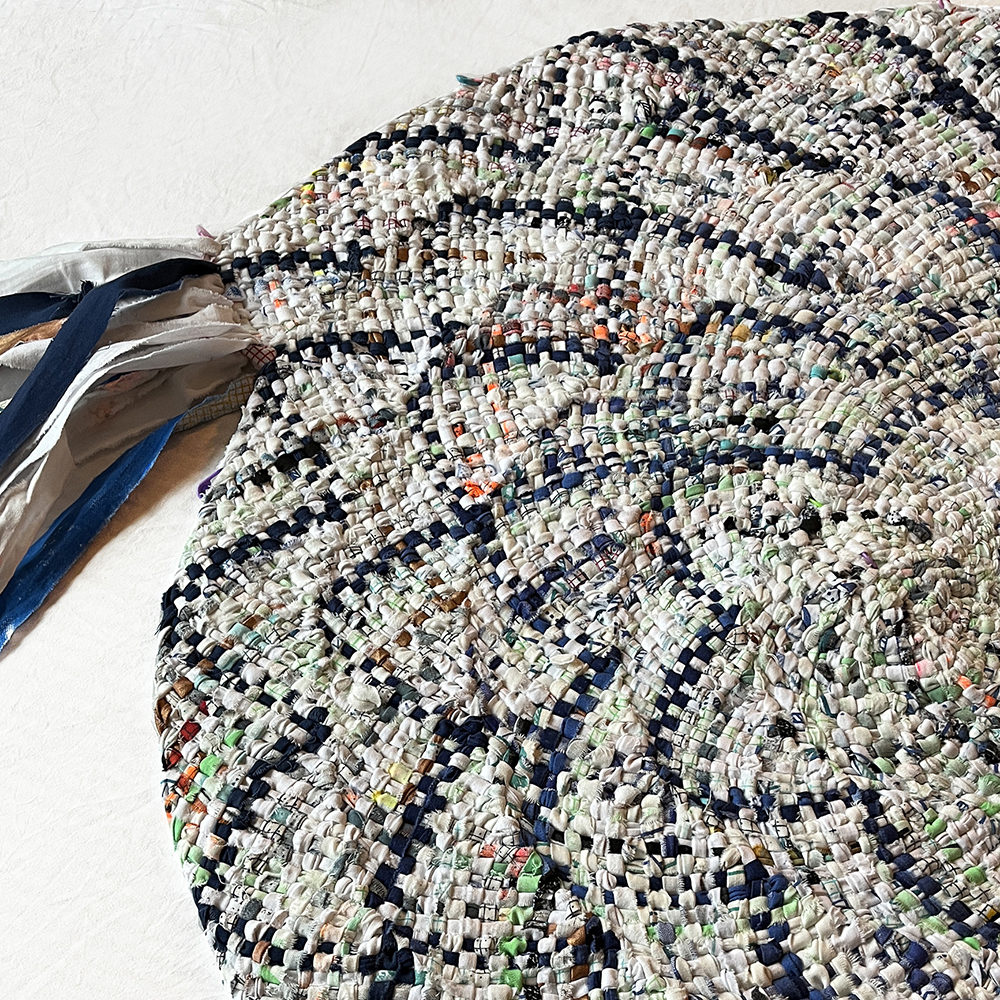The story behind an exhibited rag rug
report from a workshop cleaning
DOI:
https://doi.org/10.7577/formakademisk.5397Keywords:
rag rug, making, textile waste, learning, teachingAbstract
In my paper, I describe my insights as manager of the textile workshop at the Department of Design at Linnaeus University, as well as how we teach material-based work. Part of my work as a workshop manager is to conduct a major clean-up at the end of every year. Last year, when I was standing in front of a pile of waste textiles, I began to reflect on how this pile of textile had been transformed from well-working material into waste. In a previous project with the research group Praktikforum, together with my colleagues, I explored what kinds of waste we produced when we made material-based artistic work. Thus, it was no surprise that practice-based work produced waste. The surprise was what I could understand from it. Looking closer into the waste, I obtained a deeper understanding of what had happened in the workshop during the year; how the students had used the material, what they had learned and what sometimes went wrong became obvious. I gained a deeper understanding of how we use, understand and teach/learn about materials and how we can develop the workshop by learning from the waste. At the same time, I learned the technique of ‘inbraiding’. For me, this was a new craft technique, in which waste textiles can be used when making rugs. I saw the opportunity to use the waste and upcycle it. By exhibiting the rug, I want to discuss the possibility of working more sustainably with crafts.
References
Åkesson, L. (2023). Lättja. Det avslöjande avfallet [Laziness. The revealing apostasy]. Makadam förlag.
Arvidsson, A., Carleklev, S., Hruza, S., & Håkanson, L. (2021). Waste stories [Workshop]. Biennial International Conference for the Craft Sciences: Craft in Action, Mariestad, Sweden.
BBC (2022, February 6). The fast fashion graveyard in Chile's Atacama Desert [TV]. https://www.bbc.com/news/av/world-60249712
Belleza, E., & Luukka, E. (2018). Svenska textilflöden- textilflöden från välgörenhet och utvalda verksamheter [Swedish textile flows - textile flows from charities and selected organisations] (SMED Rapport Nr 2, 2018). Naturvårdsverket.
http://naturvardsverket.diva-portal.org/smash/get/diva2:1241255/FULLTEXT01.pdf
Blake Grey, D. (2015). Simple, spectacular braided-in rugs. Createspace Independent Publishing Platform.
Braungart, M., & McDonough, W. (2002). Cradle to cradle: Remaking the way we make things. North Point Press.
Brooks, A. (2015). Clothing poverty. The hidden world of fast fashion and second-hand clothes. Zed Books. https://doi.org/10.5040/9781350219243
Davidson, R., & Tahsin, A. (2019). Craftfulness. Mend yourself by making things. Harpers Wave.
Erikshjälpen (2023). https://erikshjalpen.se/vad-vi-gor/
Finnigan, K. (2020, February 13). Why mending is trending. Financial Times. https://www.ft.com/content/59fe8a74-4df1-11ea-95a0-43d18ec715f5
Getzmann, U. (1979). Bindningslära 2 [Weaves and drafting 2]. Liber läromedel.
Lidström, A. (2023). Redesign foundations (Publication No. 27). [Doctoral dissertation, University of Borås]. University of Borås studies in artistic research.
Naturvårdsverket (2023). https://www.naturvardsverket.se/amnesomraden/textil/dagens-textila-floden-ar-en-global-miljoutmaning/sa-paverkar-konsumtionen-i-sverige/
Röda Korset (2023). https://www.rodakorset.se/vad-vi-gor/second-hand/Skanka_till_second_hand_Detta_ska_du_tanka_pa/
Thorpe, A. (2007). The Designer's Atlas of Sustainability. Island Press.
Wellesley-Smith, C. (2015). Slow stitch. Batsford.

Downloads
Published
How to Cite
Issue
Section
License
Copyright (c) 2023 Lena Håkanson

This work is licensed under a Creative Commons Attribution-NoDerivatives 4.0 International License.
Authors who publish with this journal agree to the following terms:
- Authors retain copyright and grant the journal right of first publication with the work simultaneously licensed under a Creative Commons Attribution 4.0 License that allows others to share the work with an acknowledgement of the work's authorship and initial publication in this journal.
- Authors are able to enter into separate, additional contractual arrangements for the non-exclusive distribution of the journal's published version of the work (e.g., post it to an institutional repository or publish it in a book), with an acknowledgement of its initial publication in this journal.
- Authors are permitted and encouraged to post their work online (e.g., in institutional repositories or on their website) prior to and during the submission process, as it can lead to productive exchanges, as well as earlier and greater citation of published work (See The Effect of Open Access).
- The author(s) must manage their economic reproduction rights to any third party.
- The journal makes no financial or other compensation for submissions, unless a separate agreement regarding this matter has been made with the author(s).
- The journal is obliged to archive the manuscript (including metadata) in its originally published digital form for at least a suitable amount of time in which the manuscript can be accessed via a long-term archive for digital material, such as in the Norwegian universities’ institutional archives within the framework of the NORA partnership.
The material will be published OpenAccess with a Creative Commons 4.0 License which allows anyone to read, share and adapt the content, even commercially under the licence terms:
This work needs to be appropriately attributed/credited, a link must be provided to the CC-BY 4.0 licence, and changes made need to be indicated in a reasonable manner, but not in any way that suggests that the licensor endorses you or your use.



